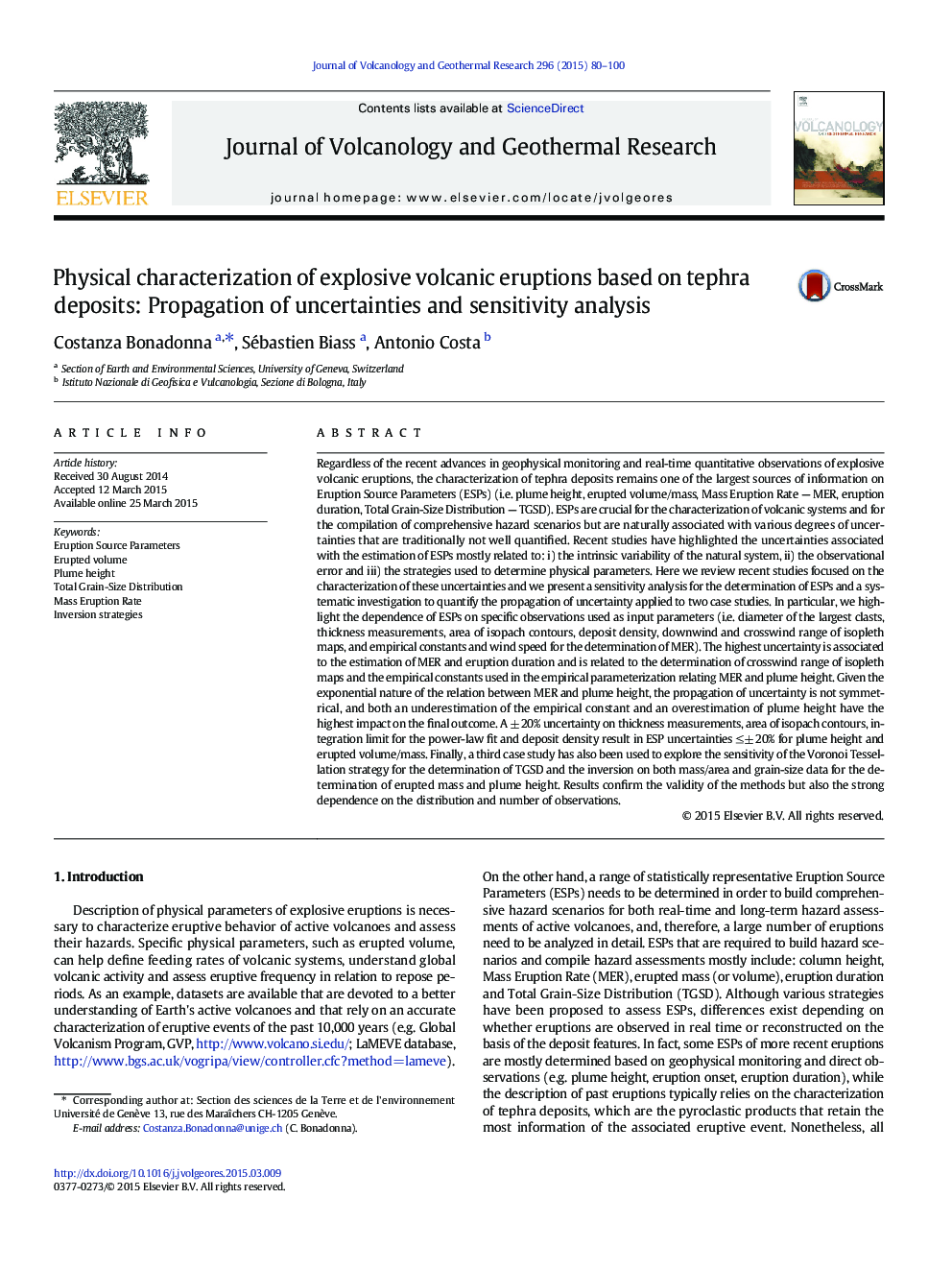| کد مقاله | کد نشریه | سال انتشار | مقاله انگلیسی | نسخه تمام متن |
|---|---|---|---|---|
| 4712351 | 1638326 | 2015 | 21 صفحه PDF | دانلود رایگان |
• Tephra deposits are one of the largest sources of information on ESPs.
• Eruption Source Parameters are associated to various degrees of uncertainties.
• Uncertainties relate to natural system, observational error and model strategies.
• The highest uncertainty was observed for the estimation MER and eruption duration.
Regardless of the recent advances in geophysical monitoring and real-time quantitative observations of explosive volcanic eruptions, the characterization of tephra deposits remains one of the largest sources of information on Eruption Source Parameters (ESPs) (i.e. plume height, erupted volume/mass, Mass Eruption Rate — MER, eruption duration, Total Grain-Size Distribution — TGSD). ESPs are crucial for the characterization of volcanic systems and for the compilation of comprehensive hazard scenarios but are naturally associated with various degrees of uncertainties that are traditionally not well quantified. Recent studies have highlighted the uncertainties associated with the estimation of ESPs mostly related to: i) the intrinsic variability of the natural system, ii) the observational error and iii) the strategies used to determine physical parameters. Here we review recent studies focused on the characterization of these uncertainties and we present a sensitivity analysis for the determination of ESPs and a systematic investigation to quantify the propagation of uncertainty applied to two case studies. In particular, we highlight the dependence of ESPs on specific observations used as input parameters (i.e. diameter of the largest clasts, thickness measurements, area of isopach contours, deposit density, downwind and crosswind range of isopleth maps, and empirical constants and wind speed for the determination of MER). The highest uncertainty is associated to the estimation of MER and eruption duration and is related to the determination of crosswind range of isopleth maps and the empirical constants used in the empirical parameterization relating MER and plume height. Given the exponential nature of the relation between MER and plume height, the propagation of uncertainty is not symmetrical, and both an underestimation of the empirical constant and an overestimation of plume height have the highest impact on the final outcome. A ± 20% uncertainty on thickness measurements, area of isopach contours, integration limit for the power-law fit and deposit density result in ESP uncertainties ≤± 20% for plume height and erupted volume/mass. Finally, a third case study has also been used to explore the sensitivity of the Voronoi Tessellation strategy for the determination of TGSD and the inversion on both mass/area and grain-size data for the determination of erupted mass and plume height. Results confirm the validity of the methods but also the strong dependence on the distribution and number of observations.
Journal: Journal of Volcanology and Geothermal Research - Volume 296, 15 April 2015, Pages 80–100
